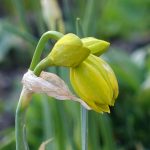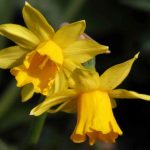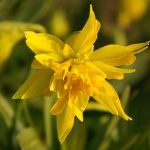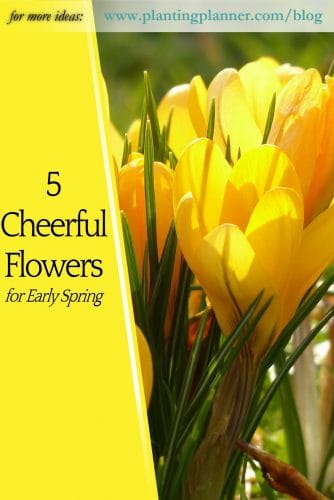from The Weatherstaff PlantingPlanner – intelligent garden design software
After months of grey, damp winter, a splash of early yellow flowers brings a shot of spring into the garden.
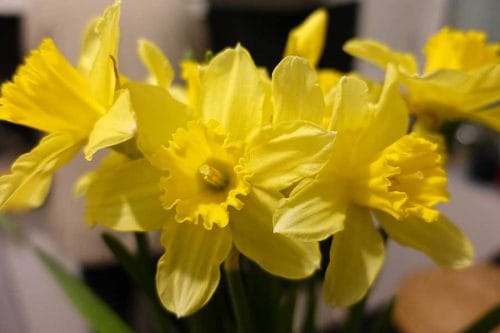
Yellow sings of warmth and sunshine. It’s the colour of happiness and optimism. Here are 5 gorgeous, cheer-uppers for gardeners.
Daffodils
While daffodils are at their peak in April, Welsh people need their daffodils in full bloom for March 1st, St David’s Day, so it’s great that so many varieties are early flowerers. Plant daffodil bulbs in autumn for a glorious swathe of sunlight in spring.
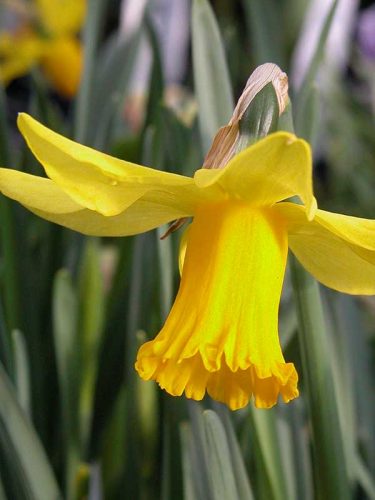
One of the earliest daffodils to flower is Narcissus ‘Rijnveld’s Early Sensation’, growing to 40cm in height. It can flower as early as January in sheltered spots. February Gold is another early daffodil and grows to about 30cm high.
I love the delicate-looking dwarf daffodils, such as ‘Tête-à-tête’ or the flouncy ‘Rip van Winkle’. Their size makes them better suited to garden pots and smaller borders and they match well with low-growing early spring flowers, like scilla and crocus.
Crocus
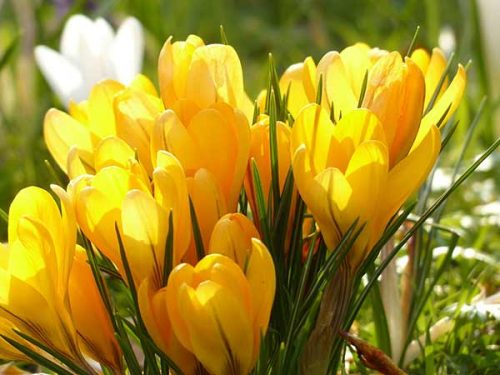
Golden-yellow, early-spring crocus brings a rich ray of sunshine to garden beds. The large Dutch crocuses are the most commonly planted spring-flowering crocuses and come in whites, purples and yellows. The corms are often sold in mixed colour bags, but I prefer to keep the colours separate.
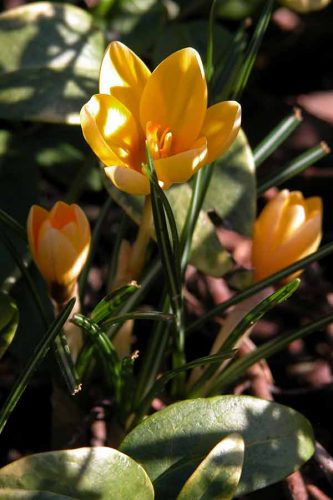
Crocus chrysanthus ‘Romance’ is a creamy-yellow crocus, with white highlights. It flowers from late winter so provides an extra early snack for bees. Crocus × luteus ‘Golden Yellow’ is a sun-drenched, rich yellow, and is perfect for naturalising through lawns.
Plant crocuses in September or October for early spring flowers. They like a sunny spot but will tolerate partial shade. Remember, they flower before trees leaf up, so a shady spot later in the year will still be sunny enough for crocuses to love in early spring.
Primroses
You can buy primulas in vibrant shades of purples, reds and yellows, but the native primrose – Primula vulgaris – is my favourite. It hugs the ground, forming a pool of pale, lemon-yellow flowers, surrounded by a rosette of bright green foliage. It is perfect for woodland areas or a shady bank.
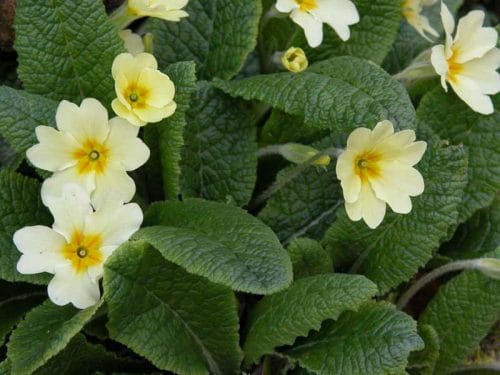
If you get down close enough to detect the flower’s fragrance, you might also notice a clever little tweak of natural adaption, which promotes successful cross-pollination by early nectar-seeking insects. Primroses have two subtly different types of flowers. In ‘thrum-eyed’ flowers, the anthers are visible in the centre of the flower, while in ‘pin-eyed’ ones, the anthers are hidden below the stigma, which looks like a tiny pinhead.
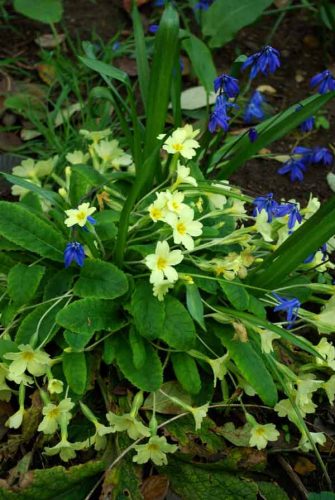
Primroses and scilla siberica make a perfect match in my hedge. When happy with their conditions, primroses will naturalise readily to form an impressive colony.
Cowslips
The wild cowslip, Primula veris, is a cousin of the native Primrose. The semi-evergreen plant has nodding, bell-shaped flowers, falling from upright stems, up to 25cm in height. Flowering from early spring, they were once a common sight in woodlands, meadows and hedgerows. With the decline of their natural habitats, they are seen far less often now.
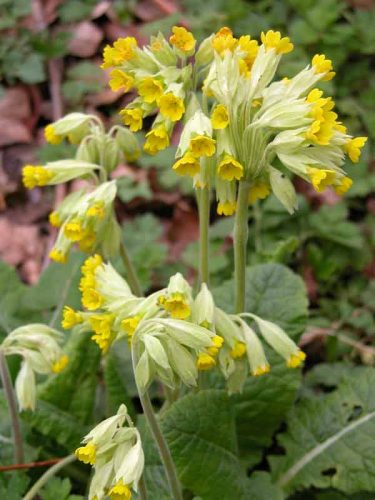
There are also pretty varieties, such as Primula veris ‘Sunset Shades’, with flowers in shades of copper, orange and red. Cowslips are at home in moist, wildflower gardens or light wooded areas.
Forsythia
In contrast to some of the more modest, low-growing, yellow spring flowers, you can’t miss the blossoms of the Forsythia. A vigorous, upright, deciduous shrub, it produces a glorious, early spring display of flowers before the sharply toothed, green foliage appears.
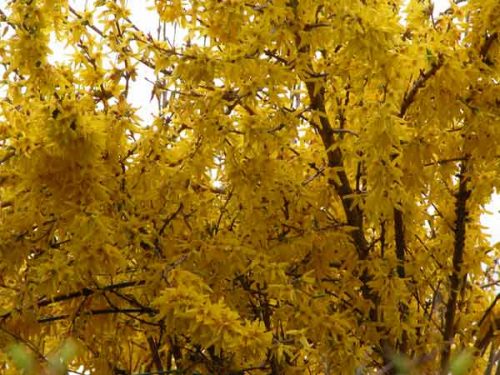
Forsythia x intermedia ‘Spectabilis’ has rich yellow flowers, each with 4 narrow, slightly twisted petals, borne in profusion from early to mid-spring. It enjoys moist, well-drained soil in full sun or light shade.
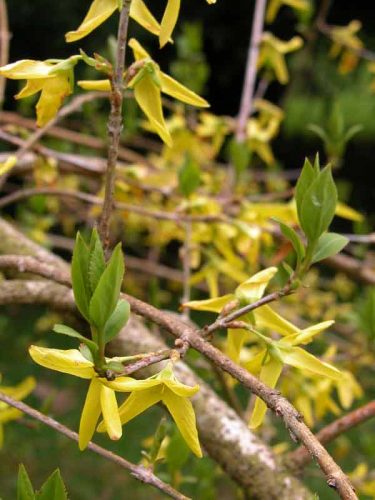
Other popular varieties are Forsythia × intermedia ‘Lynwood Variety’ and Forsythia × intermedia ‘Goldrausch’, which has larger flowers.
While winter is slowly giving way to spring, these flashes of yellow hint at warmer days to come and bring a gleam of golden sunlight into the garden.
Pin for later
For more gardening ideas, click here to follow the Weatherstaff PlantingPlanner on Pinterest.


